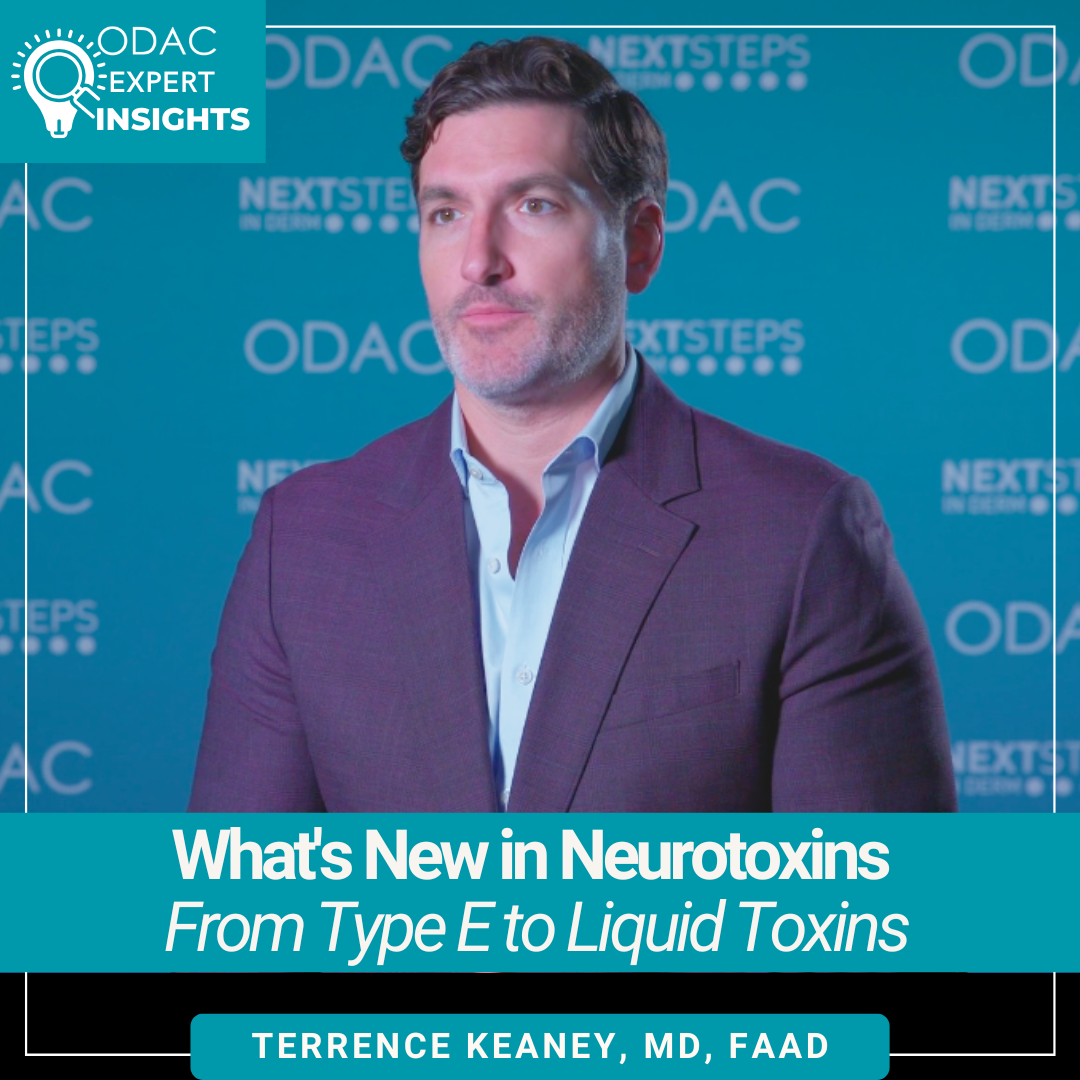New developments in neurotoxins may lead to additional applications and improved safety, according to Dr. Terrence Keaney, associate clinical professor of dermatology at GW School of Medicine & Health Sciences. Next Steps in Derm, in partnership with ODAC Dermatology Conference, interviewed Dr. Keaney, who shared how a new botulinum toxin subtype may serve as a “tester toxin” for curious, yet hesitant patients. Hear some potential non-aesthetic applications of this new subtype. Find out the pros and cons of a pre-diluted liquid toxin. Plus learn Dr. Keaney’s tips to prevent a rare complication.
Further Reading
If you want to read more about neurotoxins, check out the following articles published in the Journal of Drugs in Dermatology:
Management and Prevention of Neuromodulator Complications
ABSTRACT
The use of neuromodulators for cosmetic purposes has a remarkable safety record; nevertheless, unwanted effects can and do sometimes occur when neurotoxins are used for facial rejuvenation, such as neutralizing antibodies and eyelid ptosis. The primary objective of the following roundtable discussion was to review the most commonly reported complications from neurotoxins and summarize considerations for reducing the risk of complications. A roundtable discussion was held by 5 notable experts in their field during a special addition of the Thriving in Diversity webinar series on Thursday, February 15, 2024. Three presenters were provided with an opportunity to share their knowledge. Common complications associated with the use of neuromodulators include lack of response due to neutralizing antibody formation and eyelid ptosis. Common complications, such as neutralizing antibodies, can often be prevented by avoiding known risk factors. The use of topical alpha adrenergic agonists can often improve the appearance of eyelid ptosis. The cosmetic use of neuromodulators remains extremely safe, and serious adverse events rarely occur.
ABSTRACT
Background: Neck rejuvenation is an increasingly sought-after cosmetic procedure that offers a versatile solution to address various aging-related concerns in the neck area. Because it is non-surgical, it is an appealing choice for both patients and practitioners. This protocol introduces a highly effective approach utilizing ABO Botulinum Toxin A solution and NASHA gel 12 mg/mL for neck rejuvenation, targeting patients with muscle hypertonicity and skin degeneration.
Materials and Methods: Patient selection is based on specific criteria. ABO Botulinum Toxin A solution is administered with tailored dosages and with a multipoint technique, followed by a structured NASHA gel skinbooster regimen. Precise injection techniques address muscle hypertonicity and improve skin quality. Follow-up appointments and personalized touch-up sessions maintain results.
Results: This is a minimally invasive, cost-effective approach with minimal downtime. ABO Botulinum Toxin A solution’s precision and composition (efficacy) make it preferred. NASHA gel 12 mg/ml consistently enhances skin quality, providing tone, elasticity, hydration, and radiance. Gradual, long-lasting improvements boost patient satisfaction and confidence.
Conclusion: Physicians can expand their repertoire of treatment offerings with the combined use of ABO Botulinum Toxin A solution and NASHA gel 12 mg/ml for neck rejuvenation. This innovative approach aligns with ethical and environmental considerations, enhancing patient satisfaction and overall well-being. By learning and implementing this innovative protocol, aesthetic physicians can offer their patients a highly effective and sought-after (repetitioned) treatment option.
Did you enjoy this video interview? Find more here.

